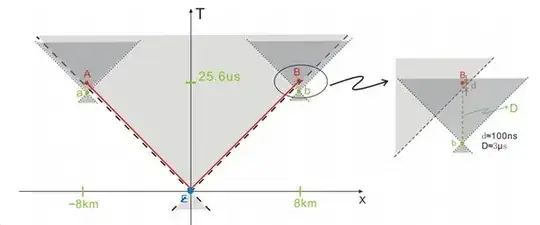Do they explicitly say "communicate", or are you paraphrasing? Because communicate's wrong. At least, when the spin measurement events are separated by a space-like interval (which are the situations where entanglement's mysterious), communication's >>impossible<<. So in those situations, entangled particles simply aren't communicating.
Let me give you a non-mysterious classical example. Suppose you hide two balls in two identical-looking boxes, a red ball in one and a blue ball in the other. Now, I hasten to immediately say that's >>not<< like entanglement -- the ball colors are predetermined (I'll give you a non-predetermined classical-like example below). Anyway, suppose you now separate your two boxes by several miles (or light-years if you like). If somebody opens one box and sees a red ball, then we know somebody opening the other box will see blue. Right? But no "communication" is necessary. Right?
Well, that's exactly what happens with entangled particles. No mystery, except for the following, which is where that promised non-predetermined example comes in, as follows. Instead of two balls, suppose each box contains a coin that you flipped in the air, and the coins are still spinning. They'll eventually land heads-or-tails, but they don't land until their respective box is opened. The mystery is that if they're "entangled", then if one lands heads, the other lands tails, and vice versa. So you'd infer that there must somehow be some "communicating" going on.
However, by analogy with our spin-entangled particles, we know for sure there's no communication. And that's the mystery -- we can't intuitively reconcile our classical thinking, as illustrated by our balls/coins examples, with that nonclassical reality. To summarize the thinking illustrated by those classical examples, recall that the balls don't communicate but there's no mystery about the correlation between their outcomes. The coins also don't communicate, but now any observed correlation is unexpected/mysterious. Ditto the spin-entangled particles. But "communicating" isn't the answer (nobody yet has an intuitively satisfying answer).
Edit since the comment below got several up-votes, let me expand that remark a bit as follows...
The observed correlation between measurements of entangled particles, whenever the measurement events are separated by a space-like interval, cannot be explained by cause-and-effect "communication". Call the two measurement events $m_1$ and $m_2$. Then one observer may see $m_1$ occurring before $m_2$ while a second observer (in a different inertial frame) may see $m_2$ occurring before $m_1$. So there's no unambiguous way to say which came first, the $m_1=\mbox{chicken}$ or the $m_2=\mbox{egg}$ (sorry, I couldn't resist:). So you cannot say one "caused" the other, simply because you can't even say one occurred before the other.
The only thing you can unambiguously say is that the single preparation event that prepared both particles in a single entangled state occurred before both subsequent measurements (it's in both their past light cones). And it's that preparation event which somehow "caused" the subsequent measurement correlation. That is, it didn't cause each individual measurement outcome, per se, because they're ultimately random, but it did somehow cause the correlation between them.
And while you're probably thinking, "Huh?...how do you cause a correlation without causing the correlated events?", that's likely a problem with our intuition developed over a lifetime observing classical phenomena.
